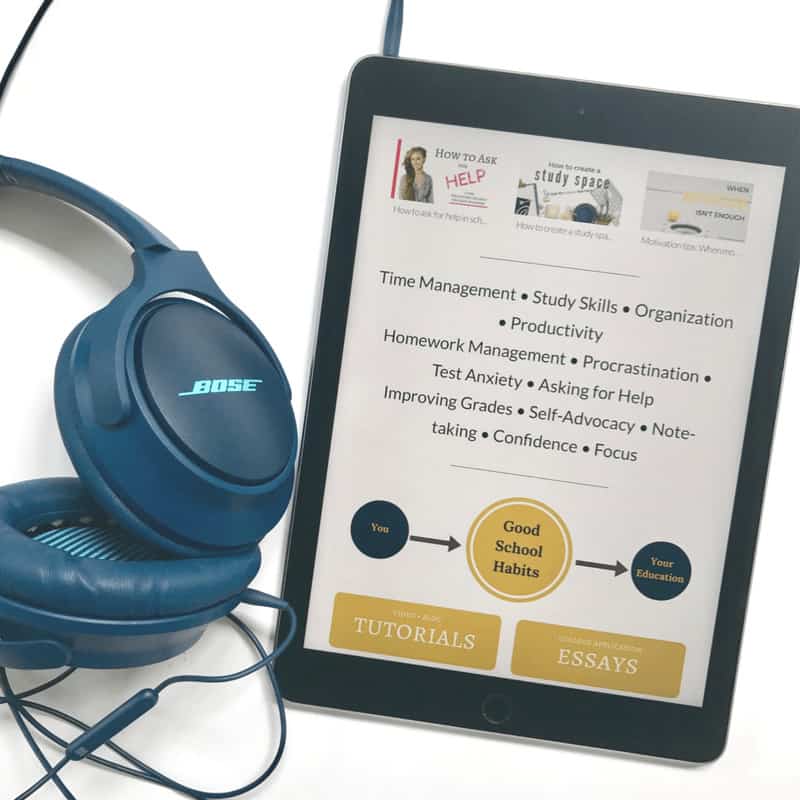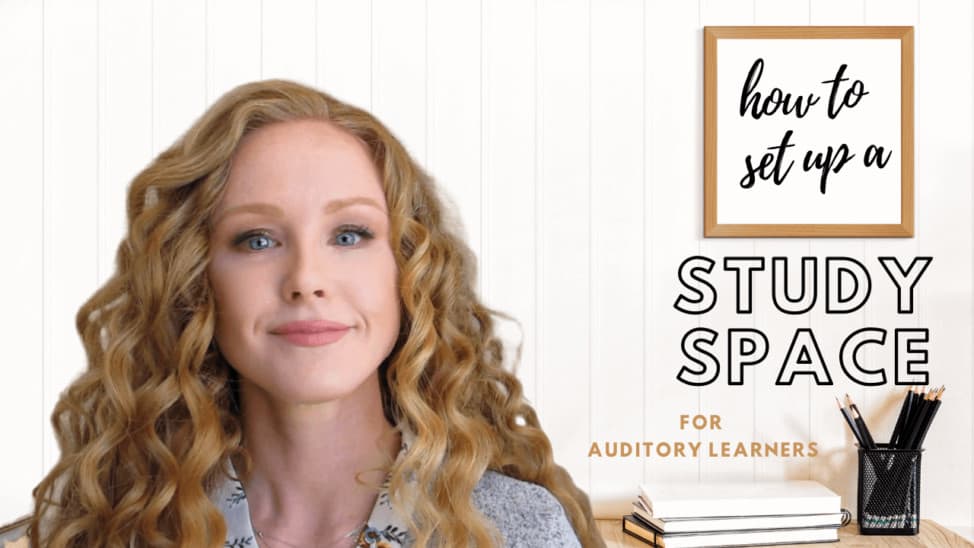By Katie Azevedo, M.Ed.
This is part 2 of a 3-part series about creating a work space or remote learning study space according to your learning style. Part 1 was about designing an optimal working environment for visual learners, while this post focuses on how to create a remote learning study space for auditory learners. Part 3 is about how to create a remote learning study space for kinesthetic learners.
To watch the video in which I explain how to create a remote learning study space for auditory learners, click on the video above. Obviously if you’re reading this you might be an auditory learner – and so the video option is probably best for you.
As I’ve said before, it’s important to understand your learner profile — in other words, what type of learner you are. Here’s some science behind learning-style theory if you really want. If you’re an auditory learner, you will better understand and process information when it’s presented verbally, rather than when you have to read it yourself.
What’s an auditory learner
Auditory learners — those who prefer to hear information — have some key identifying characteristics that make them unique from visual or kinesthetic learners.
Auditory learners also tend to:
- Be good listeners
- Like lecture classes
- Benefit from oral explanations and directions
- Benefit from active class discussions and participating in them too
- Be easily distracted by noise
- Sometimes talk to self
- Be easily distracted by too many colors, graphics and visuals
- Be able to see the “big idea” before the details make sense
If you’re an auditory learner, there are some key tricks to setting up your work or study space to support the way you learn. Remember, you like to hear things. So you want to create a study space that allows you to talk and listen. The following tips should help you out. Also, here are my top study tips for auditory learners.
How to create a remote learning study space for auditory learners
Auditory learners will find the following study space design tips helpful. When you’re done here, check out my 36 ideas for creating an awesome study space – no matter what type of learner you are.
1. Have a good set of speakers or headphones.
Whereas the most effective way for auditory learners to retain information is to hear it, you must have some kind of audio equipment to listen to videos or audiobooks. Doesn’t matter if it’s speakers or headphones; either one will do. However, if you use headphones, you’re getting a 2-for-1, as using headphones will help cancel out other background noises. Whereas auditory learners are stimulated by what they hear, you want to ensure that you’re not getting distracted by environmental noises.
2. Keep a phone, tablet or other device handy for watching videos or listening to audiobooks whenever you have a reading assignment.
If you can’t find an audiobook version of whatever you have to read, then search YouTube for a video of the book being recorded. There’s so much out there … just search.
3. Use a recording app to record your voice as you study.
One of the most effective ways for anyone to study is to teach the information to someone else. If you’re an auditory learner, this strategy is suuuuuuper effective because it combines the first principle (teaching) with your own personal strength (listening / speaking). When you’re studying, record yourself teaching the material out loud to an imaginary audience. When you’re done, play back the recording and listen to your own lecture. This is one of the most effective study techniques for auditory learners.

4. Keep desk decor and surface clutter to a minimum.
Auditory learners are often distracted by excessive colors, graphics and other visuals. Keeping these things to a minimum allows you to use all your brain resources for listening instead of seeing what’s around you.
5. Keep a full supply of sticky notes.
If you do have to read from a paper book or textbook because the audio version isn’t available, then a good learning strategy is to stop at the end of each page and write a quick summary of what you’ve read. First, speak this summary out loud, then write it down on the sticky note, and then put the sticky note right on the page. Auditory learners really benefit from annotation strategies like this one because retaining information that they read isn’t always a strength. Here are 11 of the most important annotation strategies every study needs to know.
6. Listen to music at approximately 60 beats per minute.
Studies show that for some people, instrumental music can help activate parts of the brain responsible for learning. If you’re an auditory learner, these parts of your brain are especially susceptible to the positive effects of listening to nonverbal, quiet music as you work or study. It’s soooo important to avoid music with words, however, because an auditory learner’s brain is going to latch onto any language it hears — which will pull your attention away from what you’re supposed to be focusing on.
7. Have extra seating.
A remote learning study space for an auditory learner should definitely be able to accommodate more than one person. This is because auditory learners can greatly benefit from group study sessions (where they can talk about the material) with peers. Plus, a bean bag chair in the corner just looks cool, too. If you’re planning a group study session, you need to know these tips here.
Knowing how to create a remote learning study space that matches your learning style makes a difference. It can not only improve how you learn and retain material, but it can also improve your mood. And as we all know, a good mood can change everything.
These tips for how to create a study space for auditory learners should inspire you to look at your own workspace, consider what’s working and what’s not working, and tweak a few things that can support your focus and productivity.

